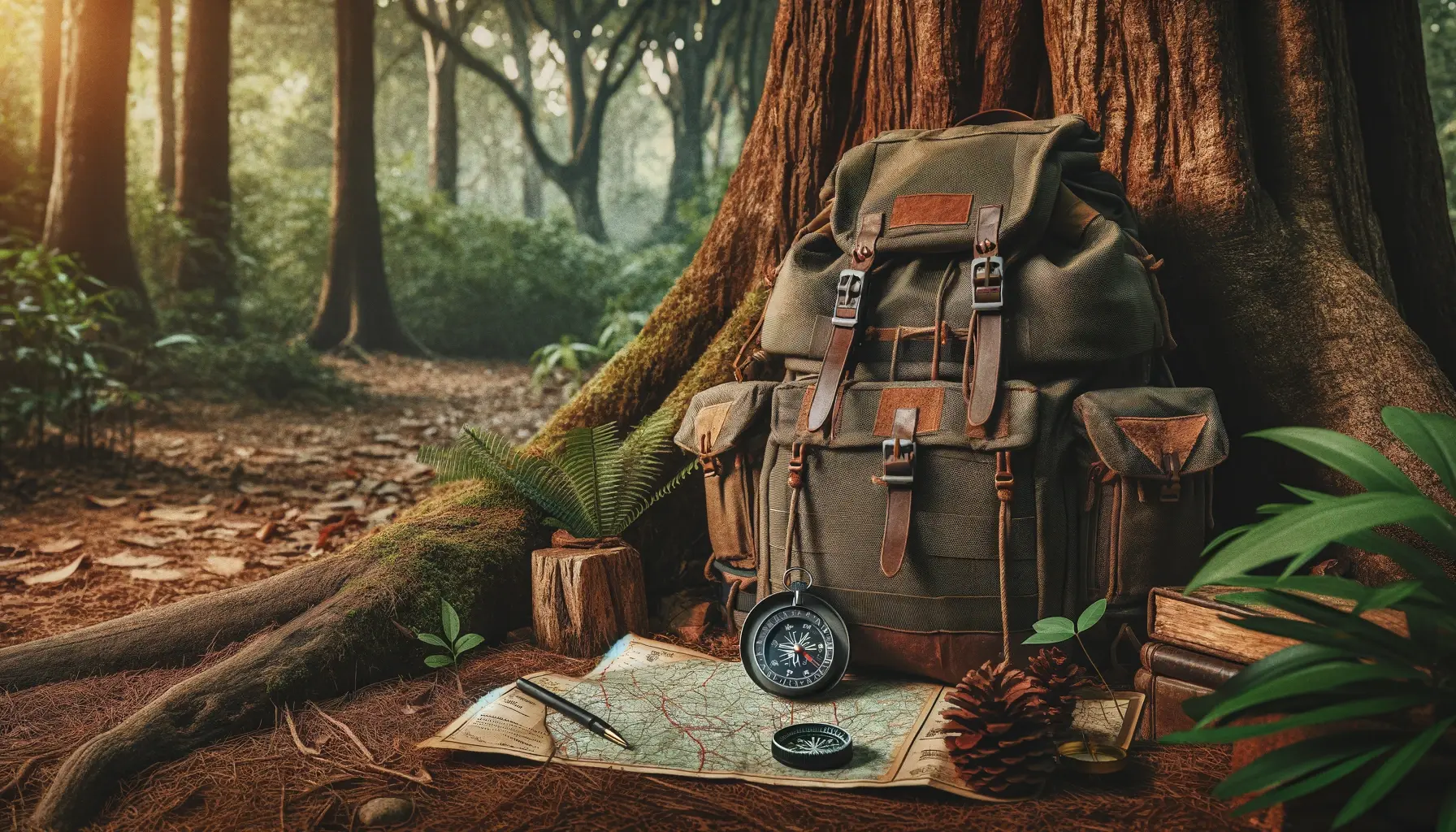In a world that's increasingly uncertain, where natural disasters, economic collapse, and other crises can strike without warning, the preparedness mindset has never been more critical. Every American patriot and survivalist knows the importance of being ready to face whatever challenges come our way. A key component of this readiness is the creation of a well-equipped bug-out bag, a personal emergency kit designed to help you survive for at least 72 hours during a sudden evacuation or disaster scenario. This article aims to guide you through the process of assembling your first bug-out bag, ensuring you have the necessary survival gear to uphold American values and freedom in the face of adversity.
A bug-out bag is much more than a simple collection of emergency items; it's a lifeline that embodies the spirit of self-sufficiency and preparedness. Whether facing natural disasters, a grid-down scenario, or a government that has forsaken its citizens, a well-prepared bug-out bag can mean the difference between life and death. It's an individual's portable crisis management center, replete with water purification tools, non-perishable food, fire starters, first aid essentials, and personal protection gear. The bag should be tailored to your unique situation, taking into account your skills, the environment, and the potential crises you may encounter. As we delve into the intricacies of selecting the survival essentials for your bug-out bag, remember that preparedness is not only about having the resources but also about fostering the resistance to tyranny and the perseverance to maintain our way of life.
Understanding the Bug-Out Bag
The concept of the bug-out bag has its roots in military history, where soldiers were provided with a grab-bag of essentials aimed at survival and evasion behind enemy lines. Over time, this concept has been adapted by the survivalist and prepper communities, who understand the importance of having a quick-departure bag ready in the face of crises such as pandemics, natural disasters, or even martial law. A bug-out bag, or BOB, is a portable kit that contains all the items one would require to survive for a short period, typically 72 hours, when evacuating from a disaster. The term 'bug-out' originates from the idea of 'bugging out' or quickly leaving a compromised area. The nature of these kits has evolved from basic survival tools to more sophisticated packs equipped with the latest in survival technology and personal protection gear.
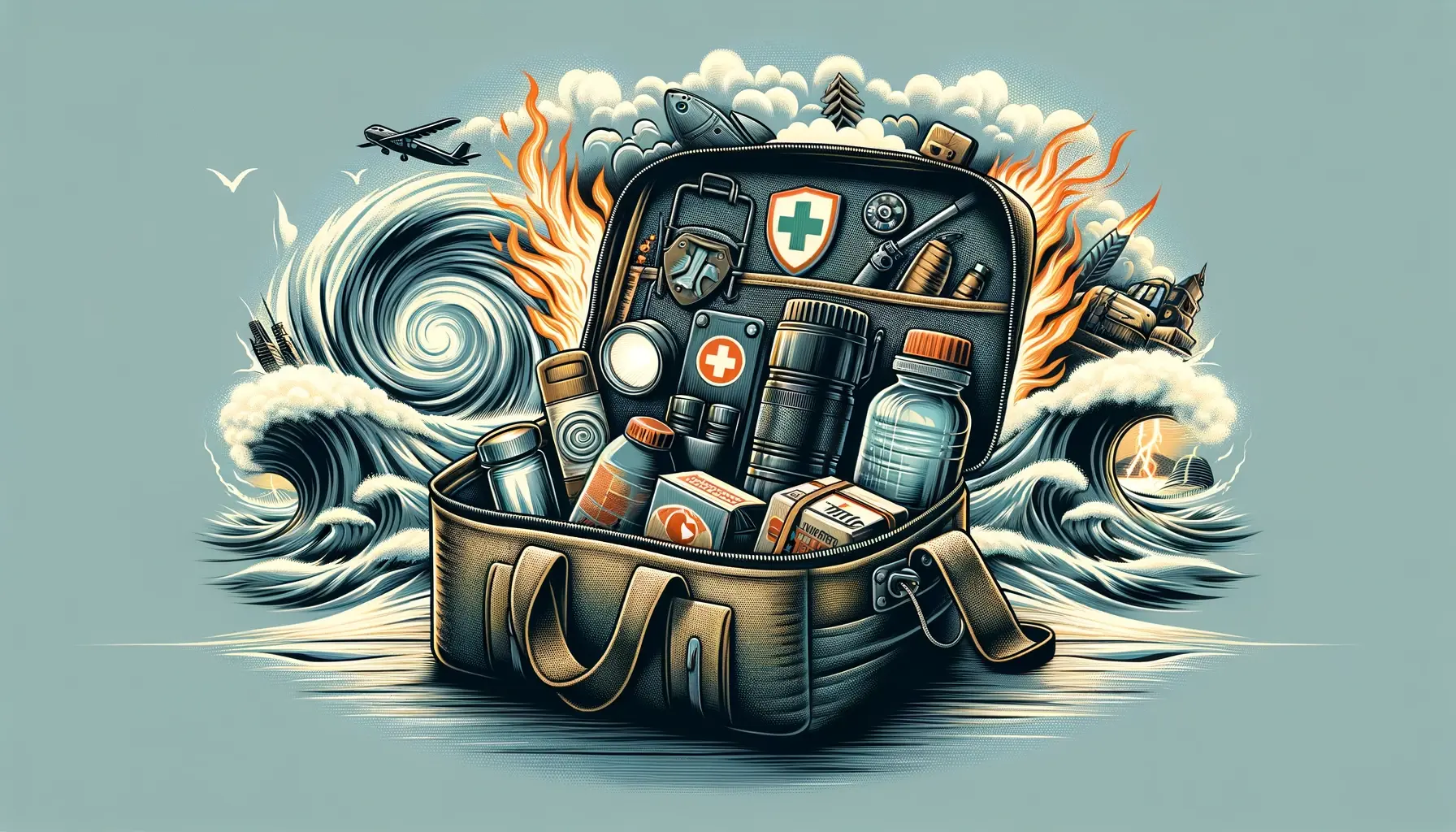
Different scenarios necessitate a bug-out bag's use, ranging from natural disasters such as hurricanes and wildfires, to man-made events like terrorist attacks or an economic collapse. The versatility of a bug-out bag lies in its ability to be customized according to the scenario envisioned, the geographical landscape, and the individual needs of the user. For example, urban survival may require different tools and provisions than wildcrafting or foraging in rural settings. When building a bug-out bag, it's essential to take into account the diverse set of possible scenarios and plan accordingly, ensuring all items serve a multifunctional purpose while remaining lightweight and compact to facilitate movement in any survival situation.
A bug-out bag is not just a pack filled with items; it's a testament to the philosophy of being prepared to maintain independence, sovereignty, and survival. This philosophy encourages continuous learning and adaptation, critical thinking, and scenario planning. As preppers and survivalists, we emphasize the mastery of skills such as fire-making, water filtration, shelter building, and navigation which are as crucial, if not more so than the gear carried. Embracing the prepper mindset means prioritizing personal preparation over reliance on government assistance, which history has shown can be inadequate or untimely. Ultimately, assembling a bug-out bag is an exercise in embracing the tenets of preparedness, self-reliance, and the resilience to face and overcome adversities that may threaten our freedoms and our way of life.
Fundamental Considerations
When preparing your bug-out bag, the first step is to assess your individual needs, which vary depending on a multitude of factors, including geography, climate, and personal health. For instance, someone living in the mountains will have different requirements than someone in the desert or urban environment—altitude sickness or hypothermia may be a greater threat in mountainous regions, while dehydration might be a more pressing concern in arid zones. Personal health considerations might mean stocking specific medications or medical equipment. Additionally, consider social factors such as family size and the presence of infants, elderly, or pets, which will influence the contents and weight of your bag. The key is to perform a thorough risk assessment that includes crisis navigation, environment-specific dangers, and personal vulnerabilities to ensure your bug-out bag meets all potential survival scenarios.

A common challenge when assembling a bug-out bag is striking the right balance between carrying all you need and ensuring the bag is not overburdened. Every item in your survival kit should serve a purpose, possibly even several purposes (multifunctionality is a hallmark of great survival equipment). Luxury items should usually be omitted in favor of essentials like food, water, protection, and first aid materials. While the contents are crucial, so too is the bag's organization and ease of access—a well-structured bag can save precious time in an emergency. Bag size, comfort, and weight distribution are also important to consider, ensuring that you can move quickly and efficiently, without being weighed down by your resources.
Typically, a bug-out bag is designed to support your survival needs for 72 hours. This duration is a common guideline because it is assumed that within this time frame, aid should become available or you'll have reached a safe location. However, recent events involving government inaction and delayed relief efforts have shown that self-reliance might be necessary for longer periods. This leads to a delicate dance of allocating resources within your bag. Stockpile items that are high in utility, such as energy bars, water filters, and heirloom seeds for emergency sustenance, and balance them with the need for the bag to remain portable and manageable, so you can maintain mobility and adaptability in the face of an ever-changing survival landscape. Remember, while the contents are critical, a bug-out bag is only as good as the knowledge and skills of the person carrying it. Regularly practicing bug-out drills and familiarizing oneself with each piece of gear is essential for enhancing situational awareness and increasing your chances of survival.
Core Contents of a Bug-Out Bag
The cornerstone of any bug-out bag is the collection of survival essentials that comprise its core contents. Essential categories include water, food, shelter, clothing, fire, and first aid, all of which must be carefully selected for their utility and longevity. Water, the most crucial element for survival, requires reliable purification methods and sturdy containers for storage and transport. For sustenance, focus on non-perishable, calorie-dense foods such as energy bars and freeze-dried meals that can be prepared with minimal resources. Ensure your food selection takes into consideration any dietary restrictions or allergies. Your shelter elements must be lightweight yet durable, providing protection from the elements with items like emergency blankets and lightweight tarps. Clothing should be chosen based on the environment, emphasizing the ability to layer for varying conditions while remaining mobile. For fire-making, include several reliable ignition sources like waterproof matches, flint strikers, or ferrocerium rods, coupled with tinder or accelerants that can catch a spark even in wet conditions.
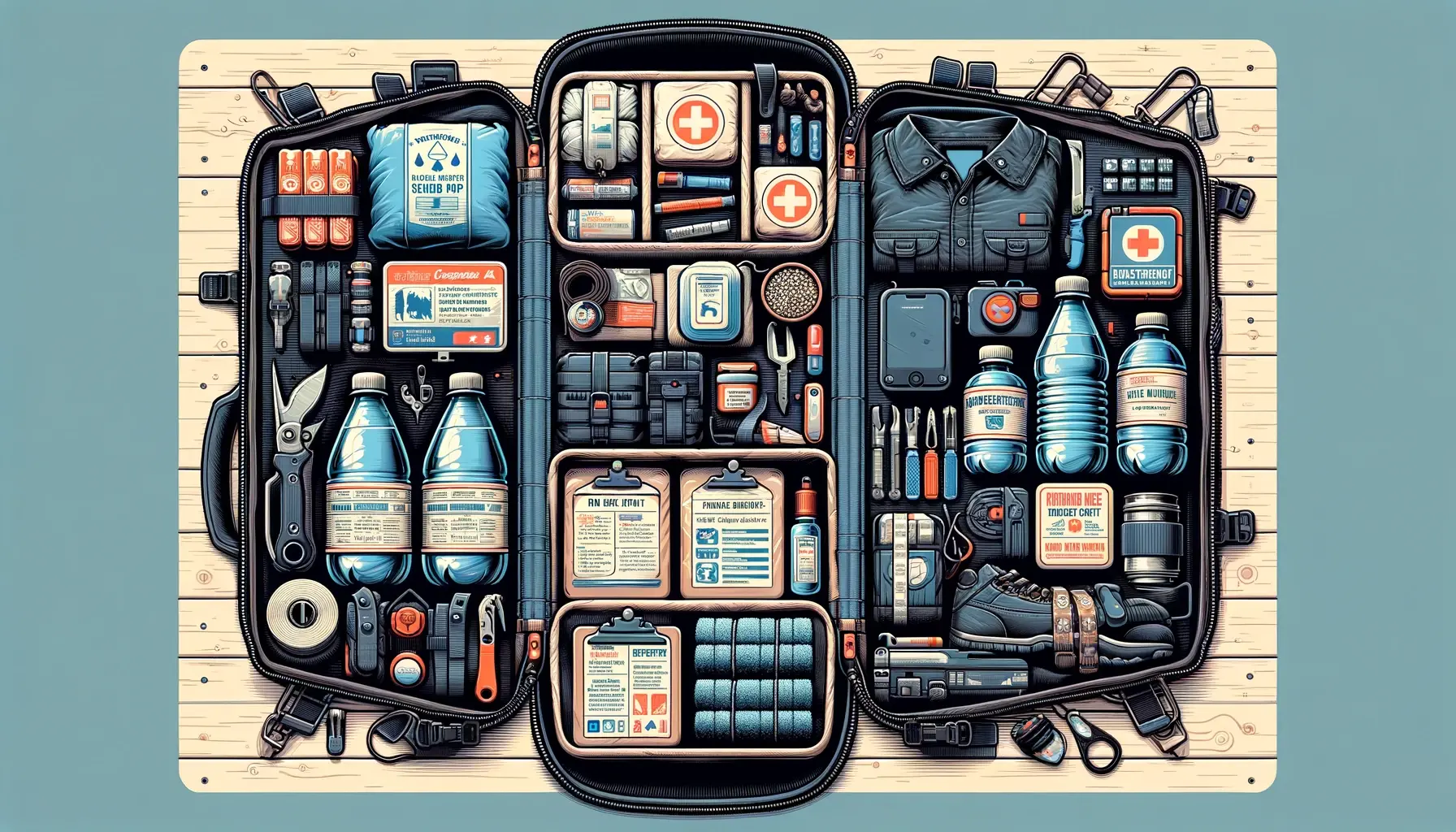
When curating the contents of a bug-out bag, it is imperative to include first aid supplies capable of treating a range of injuries, from minor cuts and abrasions to more significant trauma. A well-assembled first aid kit will contain bandages, antiseptics, pain relievers, and necessary personal medications, along with instructions for handling common injuries. A compact guide on emergency medical procedures can also be invaluable, particularly for those with limited medical training. Alongside your basic survival categories, consider the addition of multi-functional tools, such as a sturdy knife, a multi-tool, and duct tape, as well as navigation aids like compasses and detailed maps of your area. Lastly, remember that communication devices, whether they be a whistle for signaling or a hand-crank solar-powered radio for receiving updates, can be crucial in coordinating with others and obtaining information during a crisis. These core contents form the backbone of your bug-out bag and play a critical role in enhancing your odds of survival in the unpredictable circumstances that necessitate a hasty evacuation.
Water and Hydration Strategies
Water is paramount to survival, making hydration strategies a top priority in any bug-out bag. An average adult requires a minimum of half a gallon of water per day, but this amount can increase dramatically in hot climates or high-stress situations. Consequently, it is essential to pack several liters of water as a starting point, using containers like collapsible water bottles or hydration bladders that are space-efficient and light. However, because carrying enough water for multiple days is impractical due to weight, your bug-out bag must also include water purification tools such as iodine tablets, portable filters, and chemical purifiers that can render found water sources safe to drink. A sturdy stainless steel bottle can serve the dual purpose of water storage and boiling container for disinfection. Furthermore, knowledge of natural water collection methods, such as rainwater capture or dew harvesting, can be instrumental in extending your hydration capabilities beyond the initial supply.

In addition to purification, consider the means of water collection and preservation. Water filters and purifiers must be chosen based on their effectiveness against local contaminants and ease of use. A simple straw filter can be ideal for personal use, while pump filters or gravity bags might be more suitable for group scenarios. It is also wise to have backup purification methods, such as ultraviolet light sterilizers or solar pasteurization bags, which can disinfect water with minimal effort. Education on local water sources and their seasonal availability is vital, and can be complemented by carrying a detailed map highlighting rivers, lakes, and other potential water sources. Investing time in learning these skills and researching your environment can make a significant difference when an emergency arises, allowing you to maintain hydration and concentrate on other survival priorities. Remember that proper hydration is not just about survival; it also affects cognitive function and physical performance, both of which are critical in emergency situations.
Food and Sustenance Options
Securing adequate food provisions is a vital element of any bug-out bag strategy. The goal should be to select non-perishable, nutrient-dense foods that provide the necessary energy to endure stressful situations. Options such as energy bars, MREs (Meal, Ready-to-Eat), or freeze-dried meals are excellent because they are compact, have a long shelf life, and require minimal preparation. These ready-made sustenance options are a great fit for a survival scenario given their balanced content of carbohydrates, proteins, and fats. Quantity is also a consideration; packing too much can make your bag heavy, while too little could leave you without enough energy in a critical moment. Including heirloom seeds as part of your longer-term sustenance strategy can offer a renewable food source, provided you have the skills and potential time frame to grow them. Additionally, small fishing kits or snare wire can be added to facilitate foraging and hunting, supplementing packaged food with fresh nutrients, assuming local laws and regulations permit these activities and you have the necessary skills to utilize them.
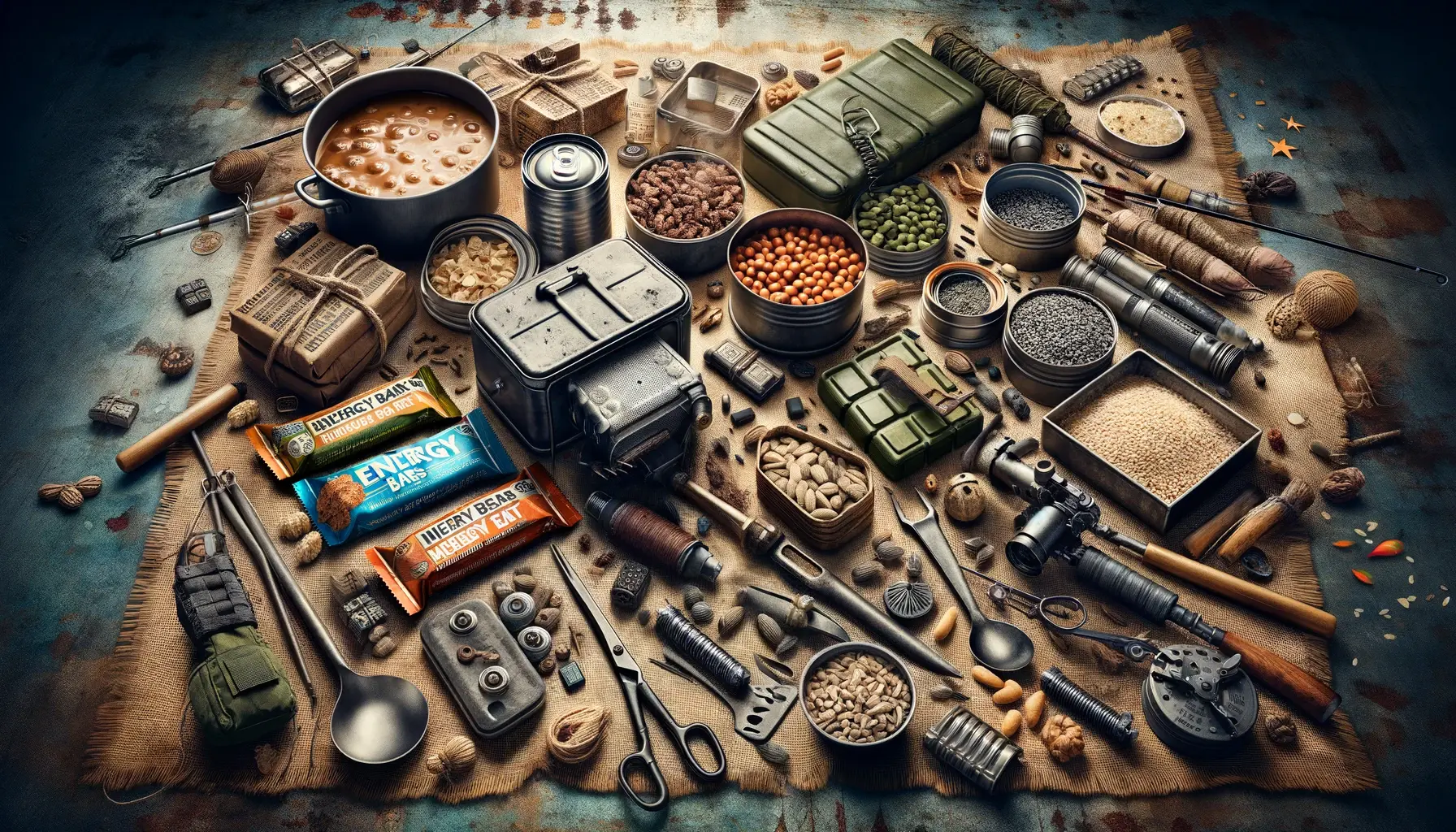
Along with the actual food, the means to prepare and consume it must be included in your bug-out bag. A compact stove and fuel, like a lightweight backpacking burner, can be crucial for both heating food and boiling water for purification. Some alternative cooking options that don't require carried fuel include solar ovens or the capacity to create a rock stove from natural materials. Effective tools, such as a small pot or mess kit, along with utensils that serve multiple purposes, are also essential additions. Aluminum foil can double as a cook surface and food storage, while a spork can reduce the number of utensils needed. Moreover, consider adding a small quantity of spices or sugar packets to provide comfort through taste, which can be a morale booster in stressful situations. The focus should ultimately be on energy efficiency—both the body's and the fuel's—ensuring that your food and sustenance options are optimized for a survival scenario where resources may have to be carefully rationed over time.
Shelter and Warmth Necessities
In a survival situation, protection from the elements is critical to maintain body temperature and overall health. Your bug-out bag should include emergency shelter options that are lightweight, easy to deploy, and durable enough to withstand adverse weather conditions. Start with a compact, waterproof bivvy or a space-saving tarp that can be used to create an improvised shelter. Pair these with sturdy pegs and paracord for versatile setup configurations. For cold environments, an emergency blanket or a sleeping bag rated for lower temperatures is essential. Additionally, consider packing a sleeping pad not only for comfort but also as a barrier against heat loss to the ground. These items serve the dual purpose of providing immediate shelter and preserving body heat, both of which can prevent hypothermia and exposure in harsh conditions.

Beyond the initial shelter structure, warmth can be supplemented through clothing and accessory choices. Pack a base layer of moisture-wicking material to keep the skin dry and maintain insulation, adding mid-layers such as fleece for additional warmth. Your outer layer should be robust and weather-resistant, capable of shielding against wind and rain. Extras like a warm hat, gloves, and wool socks are compact but significantly increase warmth retention. For more extreme conditions, a small, portable hand warmer can provide temporary relief. Consider the importance of dryness for both shelter and clothing; moisture reduces insulation properties and increases the risk of cold-weather injuries. Intelligent design choices such as a breathable yet waterproof bivvy can ultimately mean the difference between a restful night's sleep and a survival ordeal. Whether you’re facing the possibility of an urban evacuation or a wilderness emergency, these shelter and warmth necessities are fundamental to ensuring a level of comfort and security as you navigate uncertain and potentially hazardous conditions.
Clothing and Weather Protection
The clothing you pack in your bug-out bag is your first line of defense against the elements, making it imperative to choose adaptable and resilient pieces. Select garments that are suited for layering, as this allows you to add or remove layers to regulate body temperature based on the weather conditions and level of physical activity. Start with moisture-wicking base layers that keep sweat away from your skin, add insulating mid-layers like wool or fleece, and top them off with a protective outer layer that is water-resistant and windproof. Survival clothing should be durable, quick-drying, and preferably have multiple pockets for easy access to essential items. Key articles of clothing include convertible pants that can switch between long and shorts for temperature regulation, a long-sleeve shirt for sun and insect protection, and a bandana or neck gaiter for versatile headwear. All clothing should be selected with the potential for inclement weather in mind, with an emphasis on maintaining core body warmth and dryness.
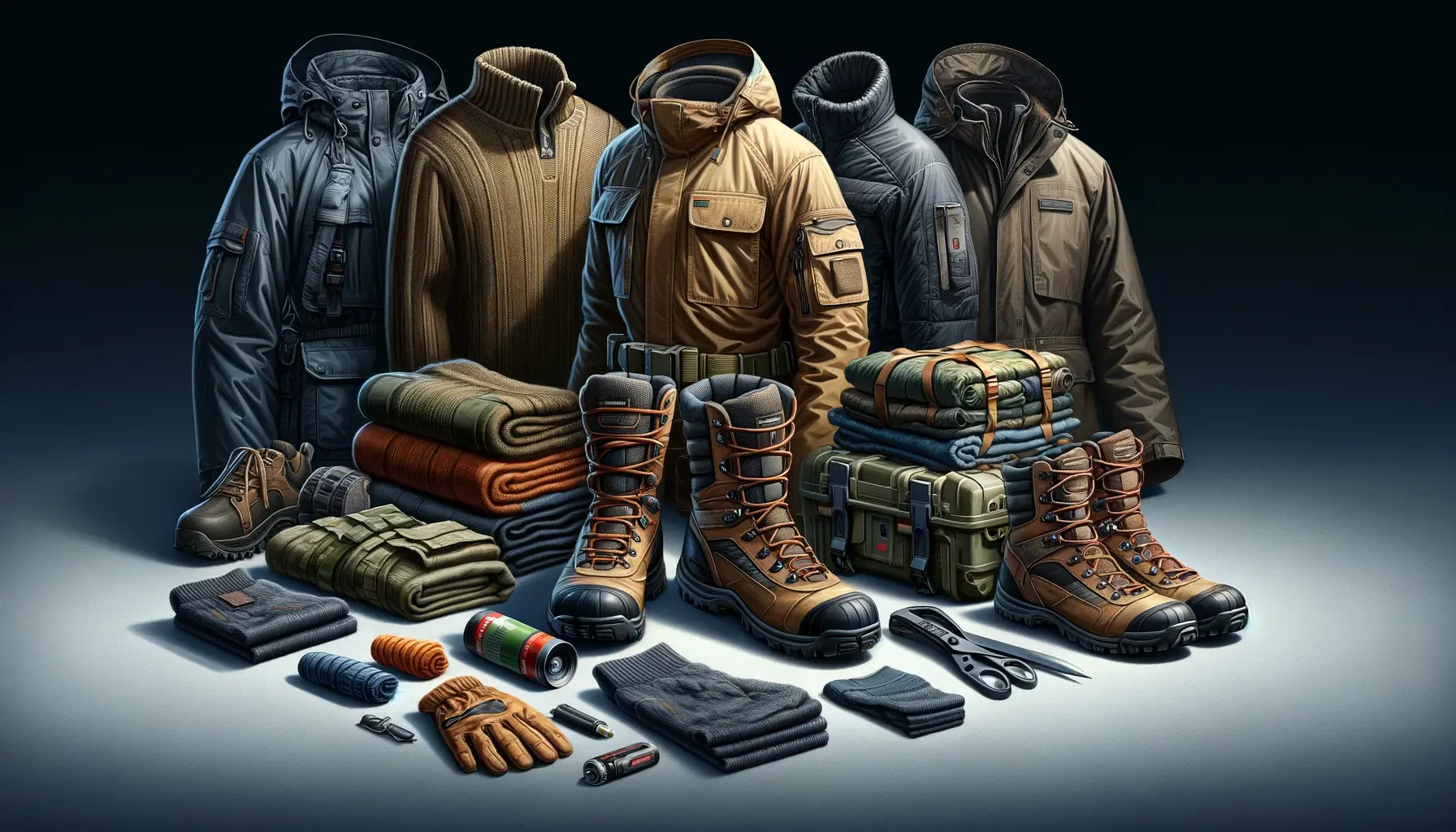
Weather protection also extends to accessories that shield you from the harsh environmental conditions you may encounter. A sturdy pair of boots or shoes that provide both comfort and protection is critical and can mean the difference between mobility and injury in a survival scenario. Opt for waterproof footwear with good traction to maintain stability on varied terrain. A wide-brimmed hat and polarized sunglasses protect against sun exposure, while thermal gloves and a warm beanie guard against cold. For intensive weather events, a lightweight, compact rain poncho or a breathable rain suit can provide an additional barrier against precipitation without significantly adding to the weight of your bug-out bag. Remember that your choice in clothing and weather protection should reflect the likely environments you'll encounter and the range of weather conditions typical for your area, balancing preparedness with practicality to ensure you're equipped but not overburdened.
Fire-Making and Lighting Tools
The ability to start a fire is paramount for warmth, cooking, and morale in any survival situation, making fire-making tools an indispensable part of your bug-out bag. It is critical to pack a variety of ignition sources to ensure the ability to make fire under diverse conditions. Waterproof matches, a dependable lighter, and a ferrocerium rod should be included, providing multiple means of creating sparks even when one method fails or runs out. Fire starters such as cotton balls soaked in petroleum jelly, commercial fire tabs, or even lint from home clothes dryers can catch a flame quickly and sustain it long enough to build up a proper fire. Additionally, carrying a waterproof container with tinder can make the difference in wet settings. Always consider redundancy in your fire-making kit: if one tool is lost or exhausted, another should be available to take its place.
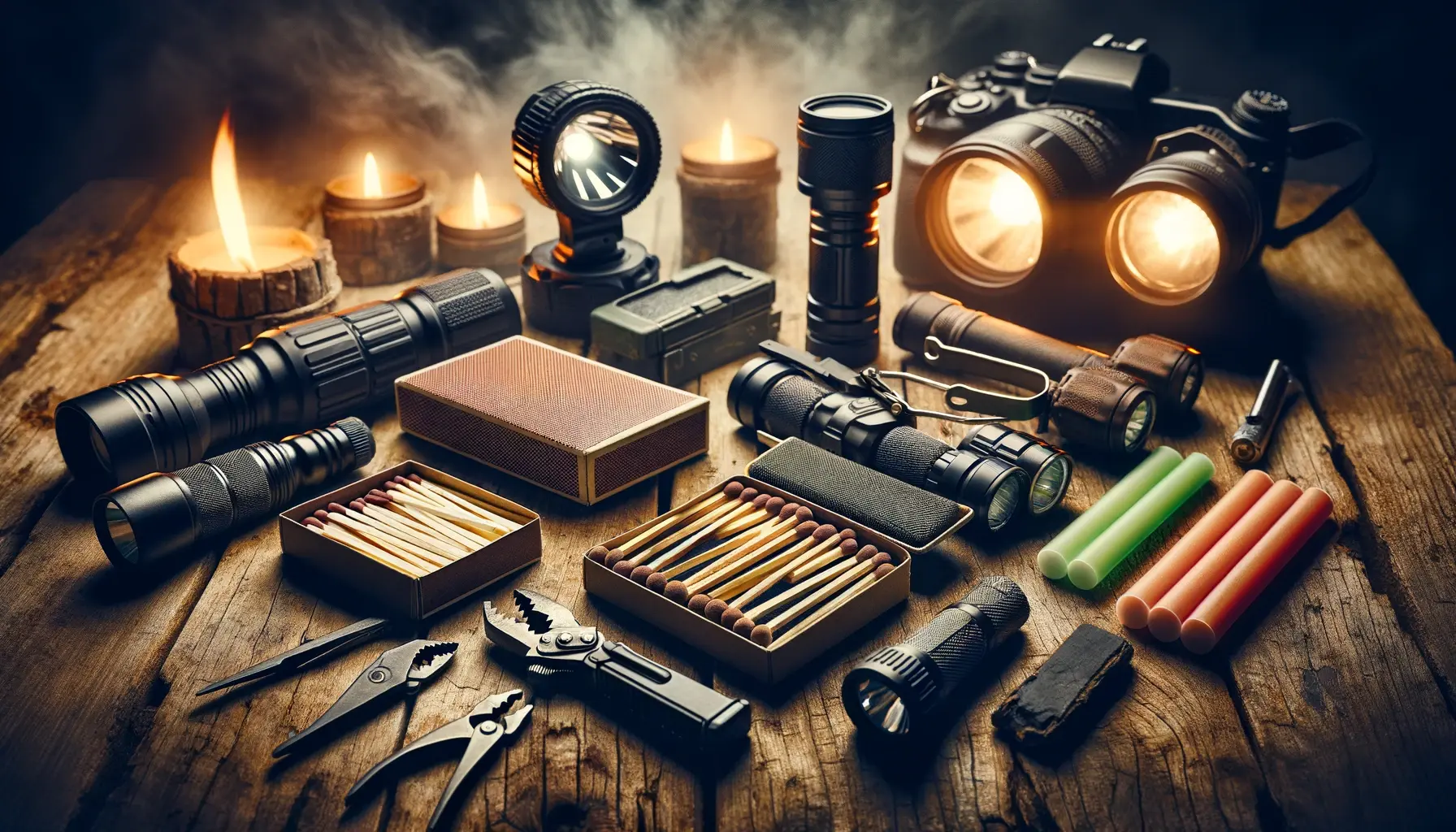
Along with fire-making implements, lighting tools are essential for nighttime visibility and signaling for help. A durable, water-resistant flashlight should be a staple, ideally with multiple brightness settings and a strobe feature for emergency signaling. LED technology offers bright light with minimal power consumption—inclusion of extra batteries or a solar-powered charger can extend usage life. A headlamp frees up your hands for tasks like setting up shelter or administering first aid in the dark. Glow sticks are a lightweight addition that provides instant, maintenance-free illumination. Remember, lighting is not only about seeing in the dark but also about being seen—consider the potential need to signal rescuers or find other members of your party. Make sure to learn the various signaling techniques and practice them, so you're prepared to effectively use lighting tools in emergency situations.
First Aid and Personal Care
A comprehensive first aid kit is a must-have in your bug-out bag to manage injuries and stay healthy in the absence of medical facilities. Your kit should be assembled with the understanding that professional medical help may not be immediately available during a disaster. Essential items include various sizes of sterile gauze, adhesive bandages, medical tape, antiseptic wipes, antibacterial ointment, as well as tweezers and scissors for removing debris from wounds. Include medications such as pain relievers, anti-inflammatory drugs, antihistamines for allergic reactions, and any personal prescription medications with a significant lead time. Additionally, invest in emergency tools such as a tourniquet, pressure dressings, and a splinting material for severe injuries. Having a first aid manual or quick reference cards is also advisable, as they can guide you through procedures you may not be familiar with. The contents of your first aid kit should mirror the potential risks of your environment and be reviewed regularly to replace any used or expired items.
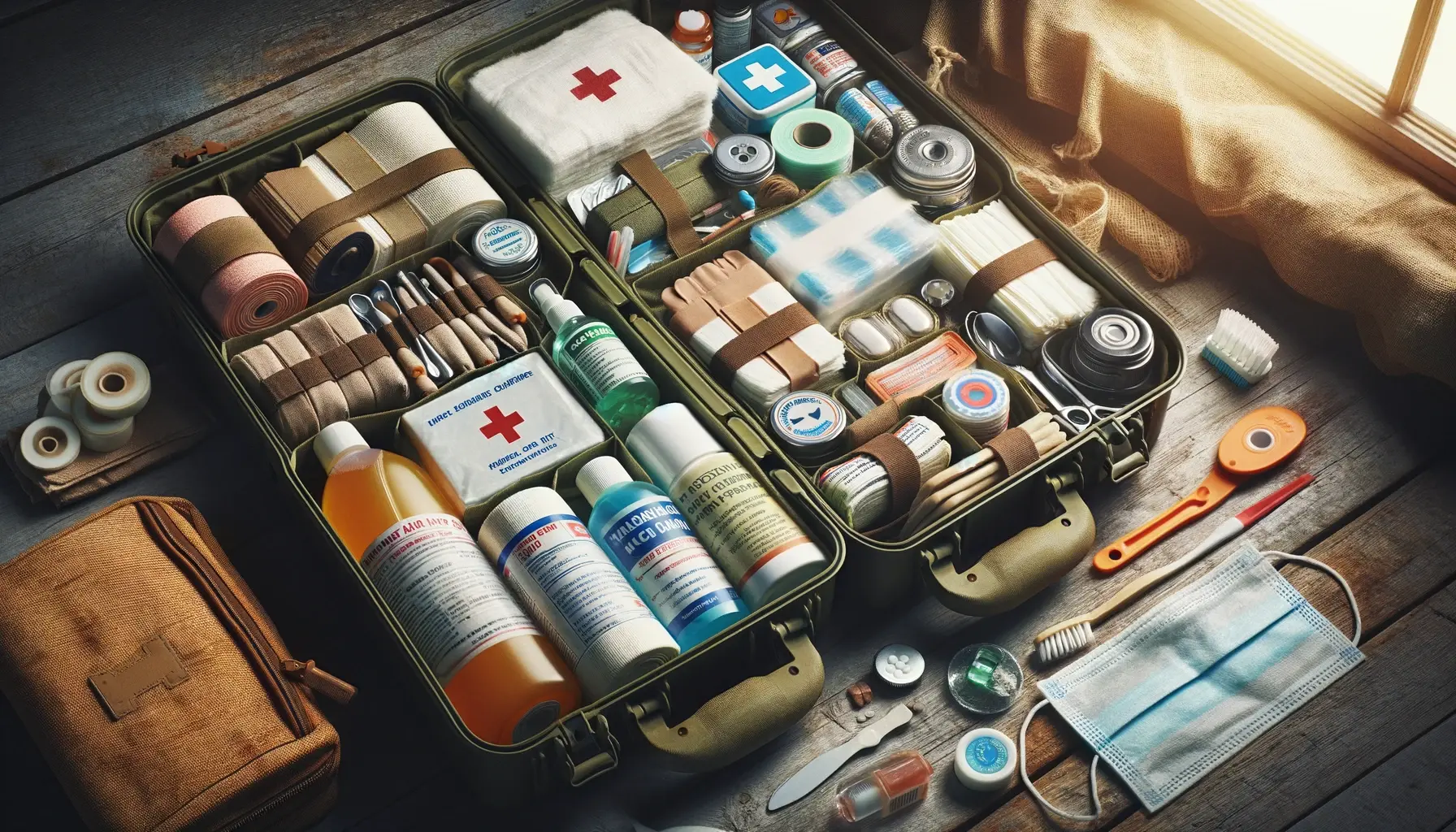
Personal care items are often overlooked but play a vital role in maintaining hygiene and preventing infection. Essentials include items such as wet wipes or hand sanitizer for keeping clean when water is scarce, toothpaste and a toothbrush for oral hygiene, and soap for washing up when water is available. Keep in mind the challenges you may face, like limited water availability, and plan accordingly—for example, by including no-rinse bathing wipes. Toilet paper, a small pack of tissues, or a fast-drying microfiber towel can also be valuable additions. For women, it is important to pack feminine hygiene products. These personal care items contribute not only to physical health but also to psychological well-being, which is crucial to maintain in stressful survival situations. Maintaining personal hygiene can prevent the spread of disease, boost morale, and help establish a sense of normalcy in challenging circumstances. Incorporating these items into your bug-out bag is an investment in your health and resilience when facing adverse conditions.
Tools and Equipment
Multi-purpose tools and equipment are the workhorses of any bug-out bag, enabling a wide range of survival tasks. A quality multi-tool with various functions such as pliers, screwdrivers, a saw, and a knife blade is an indispensable item that can conserve space and weight in your pack. Likewise, a full-tang fixed blade survival knife is crucial for more demanding tasks like chopping wood or preparing food. For navigation, a durable compass, combined with detailed, laminated maps of your local area, can guide you to safety when electronic devices fail or GPS is unavailable. Additionally, consider including a compact shovel or e-tool for digging latrines, fire pits, or even improvised shelters. These tools should be selected for their reliability and versatility, ensuring they will not fail when you depend on them most.
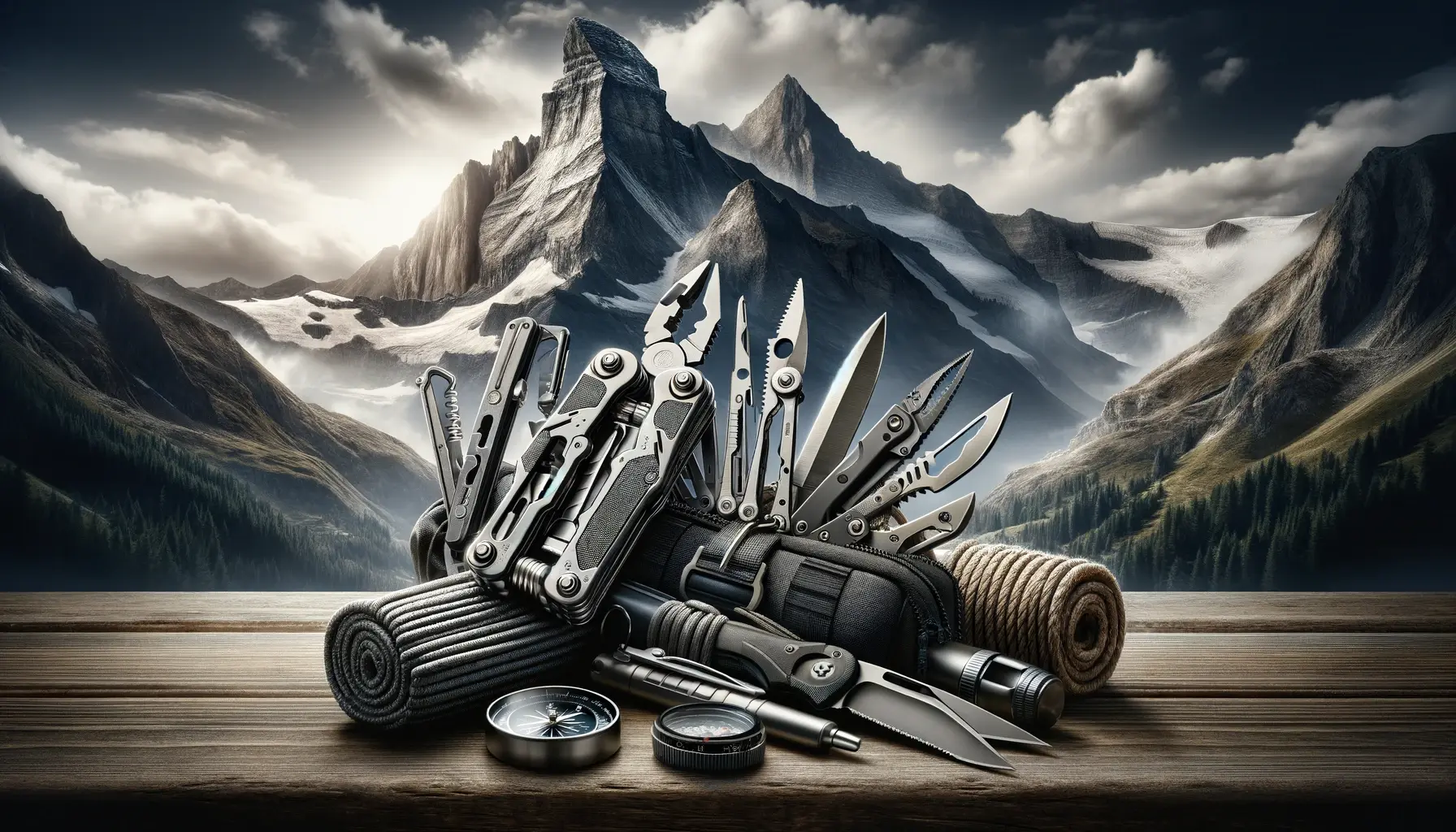
Beyond the basics, your bug-out bag might also contain more specialized gear tailored to your skill set and the potential challenges you may face. A lightweight, sturdy rope or paracord can be used for everything from setting up a shelter to makeshift repairs. Duct tape is another multi-use item that can fix clothing, repair gear, and even serve as an emergency bandage in a pinch. For bushcraft and wildcrafting, include gear like a hand saw or hatchet, which can be used for gathering firewood or crafting tools from natural materials. In terms of hunting or fishing, a compact kit with lines, hooks, and lures could provide a means for securing fresh food. Remember, the selection of tools and equipment for your bug-out bag should be a thoughtful process, prioritizing items that serve multiple purposes, are durable and lightweight, and align with your particular survival strategy. Investing in quality gear and familiarizing yourself with its use will enhance your self-reliance and capacity to thrive in a crisis.
Personal Protection and Safety
In any crisis, personal protection and safety are of utmost importance. Depending on your comfort level, legal restrictions, and the environments you anticipate encountering, your bug-out bag may include a range of self-defense tools. Items such as a sturdy knife, pepper spray, or even a personal firearm—assuming you are properly trained and comply with all local and state laws regarding its carriage and use—can provide a measure of security. It is also crucial to carry safety gear like gloves and dust masks to protect against environmental hazards, along with UV-protective sunglasses and a sun hat to guard against harsh sunlight. In the context of an emergency, self-defense extends beyond personal confrontation; it's about ensuring your overall safety is not compromised by environmental factors or other individuals.
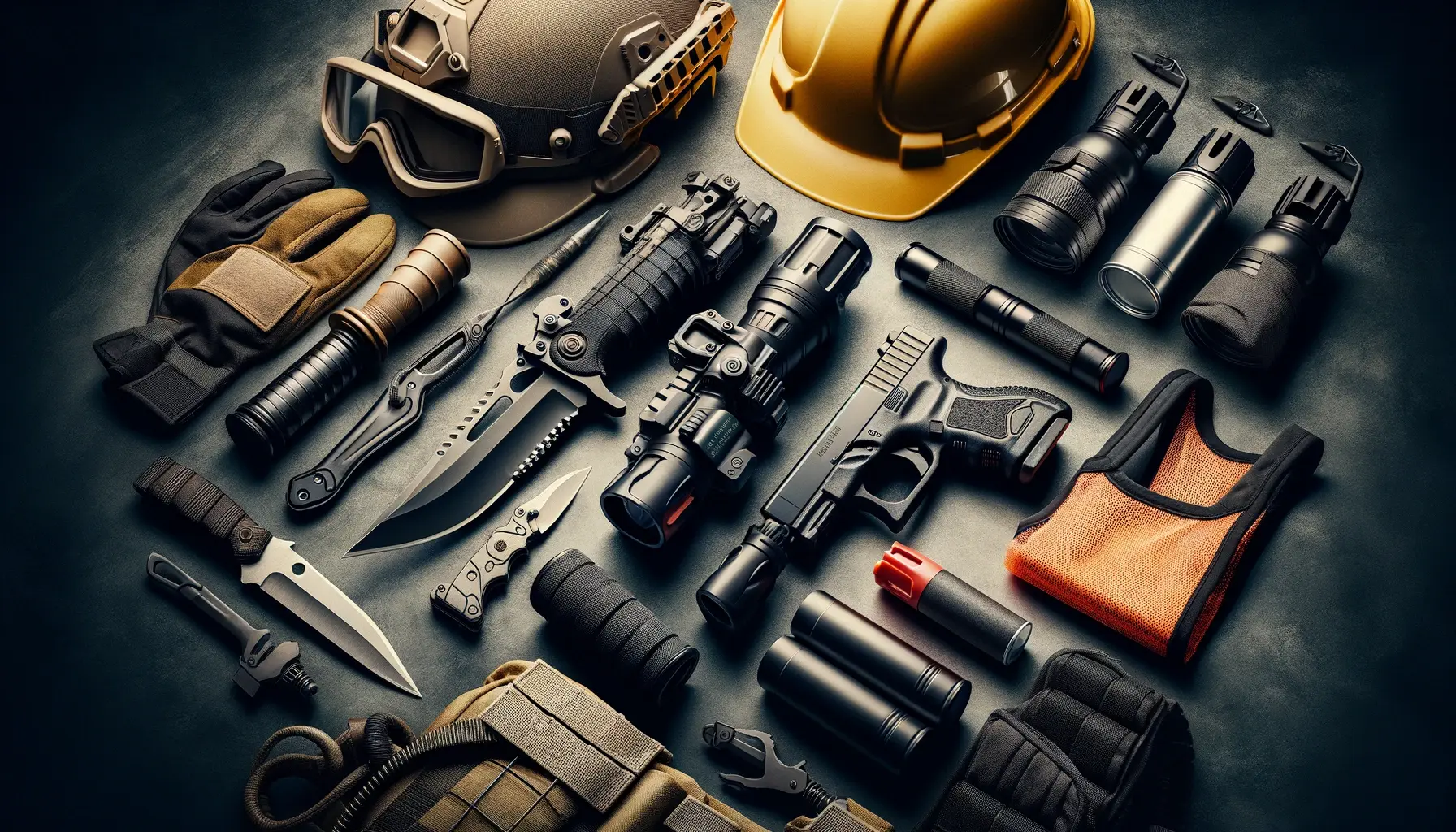
Emergency signaling devices play a critical role in personal safety, particularly when rescue might be necessary. Items like a whistle, signal mirror, or flares can help you draw attention to your location. Compact and affordable, these signaling tools could mean the difference between being spotted by rescuers or remaining lost in an emergency. For nighttime safety, chemlights or reflective tape can make you visible even under low-light conditions. It's important to understand and practice signaling techniques before you're in a situation where they're needed. Additionally, consider carrying a personal locator beacon (PLB) or a satellite messenger if you expect to be in remote locations where traditional communication can't be relied upon. In dangerous situations, being able to alert authorities or loved ones to your position can be a lifeline. As with all aspects of your bug-out bag, the goal in your selection of personal protection and safety items should be to maximize effectiveness without excessive weight or complexity, ensuring you can move swiftly and stay safe in any environment.
Customizing Your Bag
The process of building a bug-out bag is deeply personal and should be tailored to both your individual skills and the specific needs arising from potential threat scenarios. Consider the environment you’re most likely to traverse—urban dweller, suburbanite, or rural resident, each will require different tools and materials. If you have specialized skills, such as medical training or knowledge of local flora and fauna, include tools and reference materials that support these competencies. Personal medical needs should also be addressed, with extra space allocated for prescription medications, glasses or contact lenses, and any other individual health necessities. Don't forget to consider the needs of dependents; if you have children, elderly family members, or pets, it's vital to include items that cater to their welfare and comfort in your planning as well. Adapting your bug-out bag to these personal considerations ensures that, when an emergency arises, you have a strategic advantage that aligns with your capabilities and circumstances.
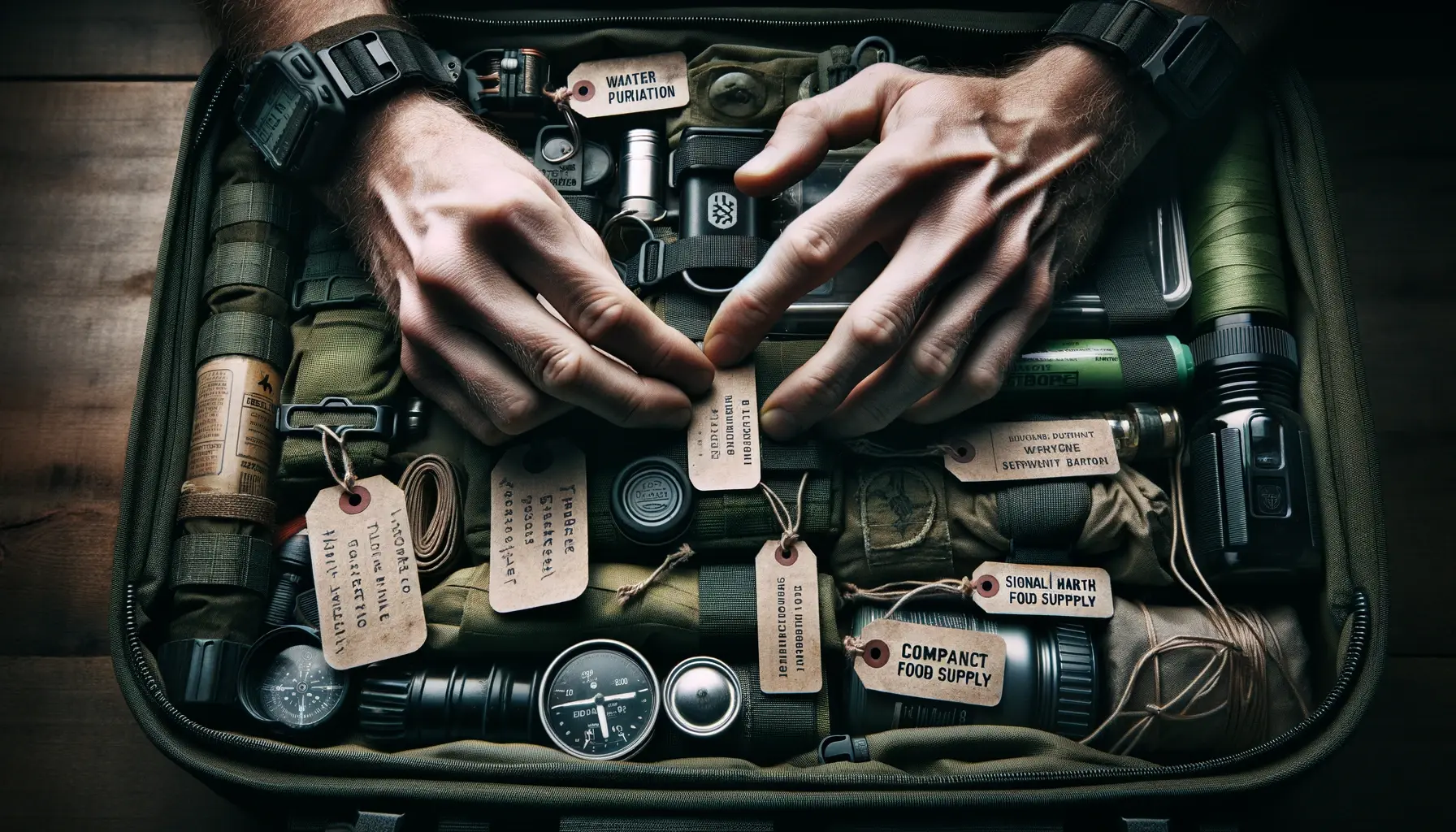
As important as it is to have a bug-out bag customized for your needs, it is also essential to regularly review and update its contents. Supplies can expire, personal situations can change, and new survival technologies may emerge that could enhance your preparedness. Quarterly inspections will ensure that perishable items like food and batteries are fresh and readiness is maintained. During these reviews, practice using the items in your bag; familiarization with your gear can significantly reduce response times in critical situations. This is also an excellent time to reconsider the relevance of each item based on past experiences in training exercises or actual emergencies.
Training with the contents of your bug-out bag cannot be overstated. Knowledge of how to use your gear effectively is as vital as the gear itself. Regular drills, whether they be navigation, fire-making, or setting up shelter, will build confidence and competence. Consider participating in survival workshops or courses that can sharpen your skills and introduce you to like-minded individuals who share your dedication to preparedness. The community engagement will offer insights into how others customize their bags and prepare for emergencies, further enhancing your ability to adapt your bag to suit evolving scenarios. Remember, the bug-out bag is an evolving tool, a reflection of your survival philosophy, and should evolve as you do—becoming a dynamic partner in your quest for preparedness and resilience.
Conclusion
Assembling and maintaining a bug-out bag is more than a practical task; it is a commitment to the preparedness mindset, an acknowledgement of the importance of self-reliance in an unpredictable world. By taking the initiative to build your first bug-out bag, you are taking a proactive step towards ensuring your and your family’s safety and upholding the American values of independence and resilience in the face of challenges. This act is a powerful assertion of personal responsibility that goes beyond the mere collection of items—it is about cultivating the skills, knowledge, and readiness to adapt to whatever life may throw at you.

The journey of preparedness is ongoing, involving continuous learning, practice, and adaptation to new situations and evolving threats. Whether you are a seasoned prepper or new to the concept of survivalism, the creation of your bug-out bag is an essential step in the pursuit of readiness for whatever the future holds. Take pride in this step and encourage others to join you in this journey, strengthening not only your chances of survival but those of your community and country.
